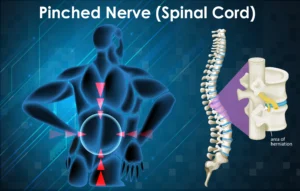M79.609 is an ICD-10 code that stands for “Pain in Unspecified Limb.” This code is used by healthcare providers to document and classify cases where a patient experiences pain in a limb (arm or leg) but the exact location or specific limb is not clearly identified. It is a general diagnosis used when the pain cannot be attributed to a specific area within the limb.
Common Symptoms:
- Generalized pain in an arm or leg
- Aching or throbbing sensations
- Discomfort that may vary in intensity
- Pain that could be intermittent or constant
- Sensitivity or tenderness in the affected area
- Difficulty using the limb normally
- Swelling or redness (in some cases)
- Stiffness or reduced range of motion
Potential Causes:
- Injury or Trauma: Sprains, strains, fractures, or other injuries to the limb.
- Overuse or Repetitive Strain: Activities that involve repetitive motion, leading to conditions like tendinitis.
- Inflammatory Conditions: Arthritis or other inflammatory diseases affecting the joints or tissues.
- Nerve-Related Issues: Neuropathy, sciatica, or pinched nerves causing referred pain in the limb.
- Circulatory Problems: Poor blood flow or conditions like deep vein thrombosis.
- Muscle Imbalance: Weak or tight muscles causing pain due to imbalance.
- Infections: Bone or tissue infections can lead to pain in the limb.
- Unknown or Idiopathic Origins: Pain with no identifiable cause despite thorough evaluation.
Diagnosis:
To diagnose the cause of pain in an unspecified limb, healthcare providers may use the following methods:
- Medical History Review: Gathering information about the patient’s symptoms, previous injuries, medical conditions, and lifestyle.
- Physical Examination: Checking the limb for signs of injury, swelling, redness, or tenderness.
- Imaging Studies: Using X-rays, MRI, or CT scans to visualize bones, joints, and soft tissues for abnormalities.
- Blood Tests: Identifying any underlying conditions such as infections, inflammatory diseases, or deficiencies.
- Nerve Conduction Studies: Assessing nerve function and detecting any nerve damage or compression.
- Ultrasound: Evaluating soft tissues and blood flow in the affected limb.
- Electromyography (EMG): Measuring muscle electrical activity to diagnose nerve and muscle disorders.
Treatment Options:
The treatment for pain in an unspecified limb depends on the underlying cause and may include:
- Rest and Activity Modification: Avoiding activities that exacerbate the pain to allow the limb to heal.
- Pain Relief Medications: Over-the-counter or prescription medications like NSAIDs (ibuprofen, naproxen) or acetaminophen to reduce pain and inflammation.
- Physical Therapy: Exercises and treatments to improve strength, flexibility, and range of motion, as well as to reduce pain.
- Heat or Cold Therapy: Applying heat to relax muscles and improve blood flow or cold to reduce inflammation and numb the pain.
- Corticosteroid Injections: Reducing inflammation and pain in cases of severe or persistent pain.
- Surgery: In severe cases, surgical intervention may be necessary to repair damaged tissues, bones, or nerves.
- Lifestyle Changes: Adopting ergonomic practices, using proper footwear, and maintaining a healthy weight to reduce strain on the limbs.
- Alternative Therapies: Techniques like acupuncture, massage, or chiropractic care to manage pain and improve limb function.
- Supportive Devices: Using braces, splints, or orthotics to support the limb and alleviate pain.
It is essential to consult with a healthcare professional to determine the most appropriate treatment plan based on the specific cause and severity of the pain.
When to Seek Medical Attention:
- Severe or Persistent Pain: If the pain is intense, lasts more than a few days, or does not improve with self-care measures.
- Swelling, Redness, or Warmth: Signs of inflammation or infection that require medical evaluation.
- Numbness, Tingling, or Weakness: Symptoms indicating potential nerve involvement or damage.
- Inability to Move the Limb: If the pain is accompanied by an inability to move or use the affected limb.
- Signs of Infection: Fever, chills, or other symptoms suggesting an infection in the limb.
- Unexplained Pain: Pain with no apparent cause, especially if it disrupts daily activities or sleep.
- Injury or Trauma: After a fall, accident, or other trauma causing significant pain or deformity in the limb.
- Poor Circulation: Symptoms like coldness, pale or bluish skin, or a feeling of heaviness in the limb indicating circulatory problems.




